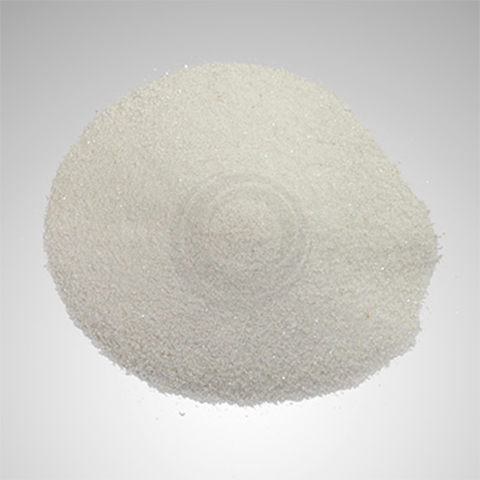
HOMETECH☰

When making RTD (Resistance Temperature Detector) temperature sensors, it is generally necessary to use filling materials, which, on the one hand, help the temperature transfer and, on the other hand, can enhance the insulation performance of the sensor. It also helps to increase the vibration and shock resistance of the temperature sensor.
Generally, magnesium oxide, 70-150um, is chosen as the filling material, as the resistance temperature can reach a melting point of 2852 and a boiling point of 3600. Quartz sand, 150um, with a temperature resistance of up to a melting point of 1713℃, can also be used. Generally, PT100 does not exceed 1000 degrees, so the temperature is acceptable, but the thermal conductivity is better. RTD temperature sensors typically use magnesium oxide, with some made of quartz powder with a larger UM. Quartz has a higher thermal conductivity and is more temperature sensitive, with a smaller expansion coefficient. Hence the RTD temperature sensor is of a higher quality.
In the aerospace industry, temperature sensors pursue a fast time constant to respond quickly to the temperature needs of the system’s equipment. Magnesium Oxide Powder, with its excellent stability, high thermal conductivity, and electrical insulation properties, has become the most widely used filling material for temperature sensor products. However, due to the presence of independent or interconnected pores of varying sizes between magnesium oxide powder particles, the larger the pores and the higher the porosity, the poorer the thermal conduction between the powder particles, thereby affecting the time constant of the sensor.
Currently, many types of magnesium oxide powder are used for filling in temperature sensors. Due to the powder's inherent characteristics combined with the temperature sensor's structural features, the filled magnesium oxide has a high porosity, severely restricting further improvement of the sensor's time constant. The application of magnesium oxide powder is a major challenge in aerospace sensors and a key technology in the aerospace sensor field.
The specialized magnesium oxide powder for temperature sensors that we provide contains tiny particles of magnesium oxide that can evenly adsorb around the larger particles of magnesium oxide. After the powder particles bind together, the pores between the magnesium oxide powder particles are reduced. As a result, the compactness of the powder increases when filled into the temperature sensor, leading to a decrease in porosity.
At the same time, the increased contact area between the powder particles also increases the thermal conductivity of the filled magnesium powder. This is beneficial for improving the time-constant performance of the temperature sensor.
The mixed magnesium oxide powder exhibits strong adsorption between the powder particles, resulting in high bonding strength between the powder and the components of the sensor's filling section. This enhances the powder's fixation effect on the sensor's internal components. As a result, it can withstand vibration levels of up to 20G in an oscillating environment and endure temperature shocks ranging from 290°C to low temperatures of -40°C for 15,000 cycles. Higher reliability of sensors is achieved.
| Properties | T22SR | 3LA | 5A | 33 | 35 | |
| Physical Properties | ||||||
| Density (g/cc)* | 2.39±0.2 | 2.39±0.02 | 2.39±0.02 | 2.38±0.02 | 2.45±0.02 | |
| Flow (sec./100g)* | 175±15 | 175±15 | 175±15 | 180=20 | 180±20 | |
| Static Flow (g)* | 53±8 | 53±8 | 53±8 | 53±8 | 53±8 | |
| Magnetic Iron(ppm)* | 25±25 | 25±25 | 25±25 | 25±25 | 25±25 | |
| U.S.Std.Sieves (%Retained)* | ||||||
| 40 | (425um ) | 0±0.1 | 0±0.1 | 0±0.1 | 0±0.1 | 0±0.1 |
| 60 | (250um) | 32±7 | 32±7 | 32±7 | 32±7 | 31±7 |
| 100 | (150um) | 27±6 | 27±6 | 27±6 | 27±6 | 25±6 |
| 200 | (75um) | 27±6 | 27±6 | 27±6 | 27±6 | 30±6 |
| 325 | (45um) | 9±3 | 9±3 | 9±3 | 9±3 | 9±3 |
| -325 | (-45um) | 5±2 | 5±2 | 5±2 | 5±2 | 5±2 |
| * determined by applicable ASTM methods | ||||||
| Resistance | at 40W/in2 | at 30W/in2 | ||||
| Megohms | 12±4 | 8±4 | 7±4 | 30±15 | 15±10 | |
| Megohm-inches | 2340±780 | 1560±585 | 1365±585 | 5880±2940 | 2940±1960 | |
| Chemical Analysis (%) | ||||||
| Mgo** | 95±3 | 95±3 | 95±3 | 93±3 | 79±3 | |
| CaO** | 1.2±0.5 | 1.2±0.5 | 1.2±0.5 | 1.0±1 | 1.0±1 | |
| SiO2** | 3.5±1 | 3.5±1 | 3.5±1 | 3.0±2 | 6.0±2 | |
| Fe2O3** | 0.1±0.1 | 0.1±0.1 | 0.1±0.1 | 0.1±0.1 | 0.1±0.1 | |
| Al2O3** | 0.7±0.5 | 0.7±0.5 | 0.7±0.3 | 0.5±0.3 | 0.5±0.5 | |
| ZrO2** | 3.0±2 | 13±2 | ||||
| ppm Sulfur | 25±25 | 25±25 | 25±25 | 25±25 | 25±25 | |
| ppm Boron | 35±25 | 35±25 | 35±35 | 35±25 | 35±25 | |
| ppm Carbon | 50±50 | 50±50 | 50±50 | 50±50 | 50±50 | |
| **determined by X±Ray Florescence | ||||||
| LOI(wt.%)* | 0.01±0.01 | 0.01±0.01 | 0.01±0.01 | 0.015±0.01 | 0.015±0.01 | |
| Sinter Index(g)* | 25±25 | 25± 25 | 25± 25 | 25±25 | 25±25 | |
| *determined by applicable ASTM methods | ||||||
| All grades of MgO may be Silicone Coated on request. LST is available to improve MgO shelf life ST is available for moisture protection of MgO in low temperature heating elements. | ||||||